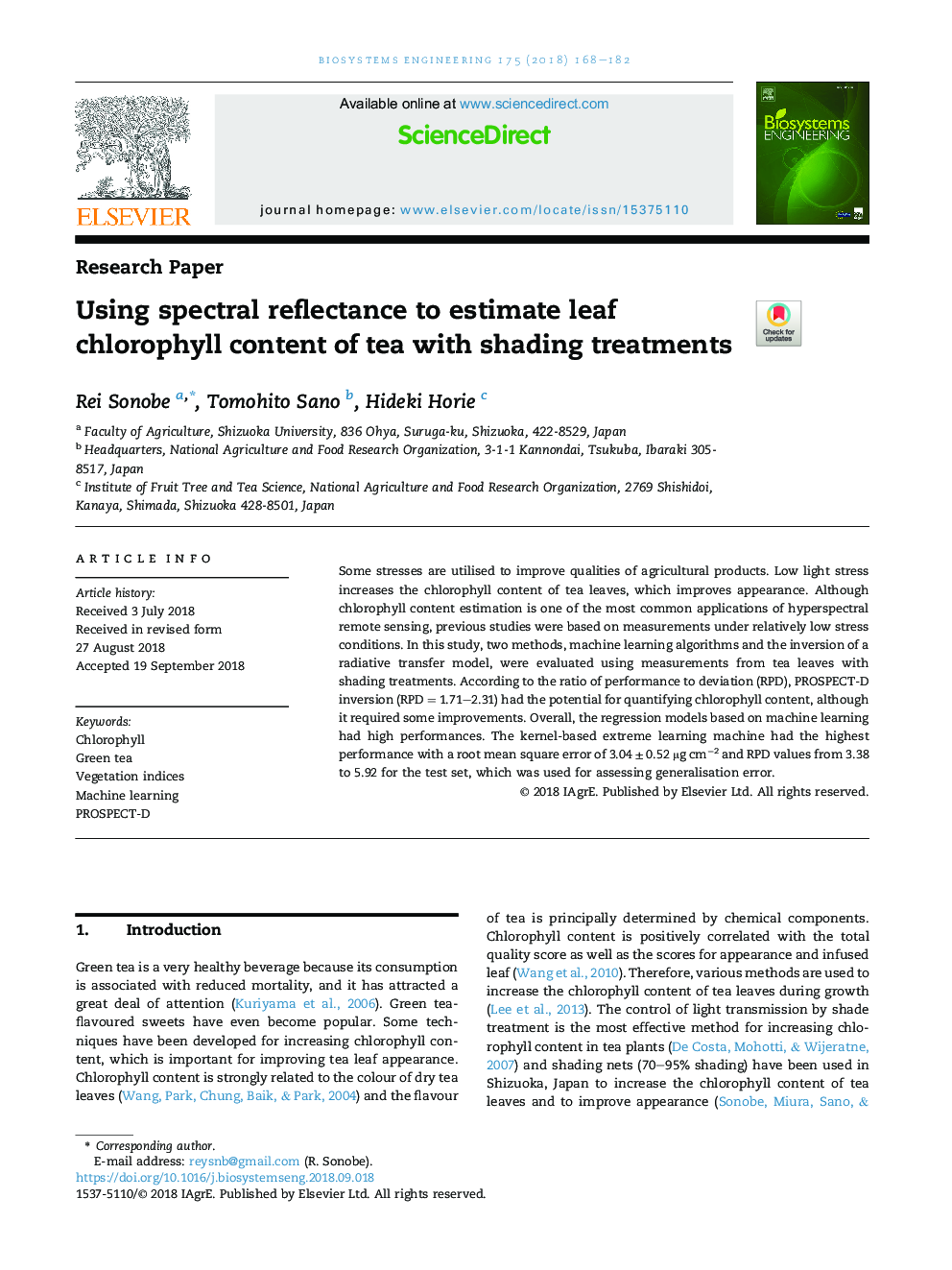| Article ID | Journal | Published Year | Pages | File Type |
|---|---|---|---|---|
| 11029533 | Biosystems Engineering | 2018 | 15 Pages |
Abstract
Some stresses are utilised to improve qualities of agricultural products. Low light stress increases the chlorophyll content of tea leaves, which improves appearance. Although chlorophyll content estimation is one of the most common applications of hyperspectral remote sensing, previous studies were based on measurements under relatively low stress conditions. In this study, two methods, machine learning algorithms and the inversion of a radiative transfer model, were evaluated using measurements from tea leaves with shading treatments. According to the ratio of performance to deviation (RPD), PROSPECT-D inversion (RPD = 1.71-2.31) had the potential for quantifying chlorophyll content, although it required some improvements. Overall, the regression models based on machine learning had high performances. The kernel-based extreme learning machine had the highest performance with a root mean square error of 3.04 ± 0.52 μg cmâ2 and RPD values from 3.38 to 5.92 for the test set, which was used for assessing generalisation error.
Related Topics
Physical Sciences and Engineering
Engineering
Control and Systems Engineering
Authors
Rei Sonobe, Tomohito Sano, Hideki Horie,
